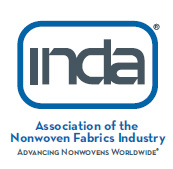 Judson Fidler
Judson Fidler
Technical Customer Service Manager, Suzano Pulp And Paper
Judson Fidler joined Suzano Pulp and Paper in 2008 as Technical Customer Service Manager providing technical support in North America focusing on product and process optimization utilizing Eucalyptus fiber in wet laid applications. Judson is based out of the international office of Suzano located in Fort Lauderdale, Florida. Judson spent the first 10 years of his career in R&D and Product Development working in the southern softwood fluff pulp and absorbent products segment of the industry. Judson graduated from the University of Southern Mississippi in 1997 and holds a B.S. in Biological Sciences.
Wednesday 2:00 pm - 3:00 pm
Innovative Hygiene Technology II
BEKP FLUFF PULP: Product Developments and Short-Fiber Benefits for Nonwoven and Absorbent Products
In the past 7 years, Suzano Pulp and Paper has been developing the world_s first industrial scale pure eucalyptus fluff pulp. During 2015, our Suzano mill (located in Brazil) was modernized as our first step into this market. Production and sales began in December 2015, with an annual capacity of 100k tons per year. In the past years, several studies were conducted with international laboratories and clients and we would like to share our key findings during the Conference. The Eucalyptus fiber is known to have low coarseness and short fiber length (high fibers per gram) that can be utilized to regulate capillarity and fluid distribution. Its fiber morphology allows cellulosic fluid transport to exist in interstitial spaces or in larger capillary spaces that air or non-fluid transporting substances might occupy. Therefore, the correct blend and use of this new fiber in absorbent and nonwoven products will regulate the product_s wet tensile, compressibility, stiffness, and softness at levels that the regular market long fiber fluff cannot deliver. During the conference, we will be presenting our project development and performance results obtained from market and laboratory tests. Initial results have demonstrated the short fiber morphology to allow for: Improved product rewet Improved compressibility leading to better embossing integrity and channel formation Reduced wet tensile and demand wettability Greater flexibility Reduced energy consumption during hammer mill processing Finally, we will discuss possible fiber blending processes and initial product applications in the absorbent and non-woven markets. Current technology allows greater functional diversity in the formation of these products. With different forming heads, layering allows fibers with different functions to be placed and oriented strategically to control functional properties. Thus, different levels of long and short fiber blending can deliver different product specifications and applications to the market, making the new fiber an interesting product for niche markets and new product developments projects



